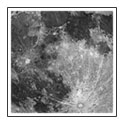"The (Philadelphia) Comic Con is for nerds.
The (Philadelphia) Comic Con is for nerds.
The (Philadelphia) Comic Con is for nerds.
This is the dogma that engulfs and energizes everyone packed into the Philadelphia Convention Center on a bleach-bright Friday in June. Whether you attended to flaunt your homemade Borg costume, truffle-pig-style sniff out a collector’s edition Nintendo 64 game cartridge, meet Lando Calirissian, or just to watch as it all swam by, a frenzied sense of community pervades the entire event. Inside here, we are all outsiders. In two essays, my long time friend Kendall Grady and myself, describe our personal encounter, engagement, and osmosis with the same Comic Con. In the following, deep currents of spectatorship, participation, nostalgia, memory, play, and eroticism, fight for gravity in the conjuring of our inner dweeb. Because, the (Philadelphia) Comic Con is for dweebs
"
-MATT KALASKY
In a parallel universe, my online dating profile cites B movies, Old English, and vanilla S&M among my interests. I would never have posited this list to nominate me for the Wizard World 2011 Philadelphia Comic Con this side of the worm hole. I thought only Groupon had such power. While an impromptu ten-dollar investment brought me to the Philadelphia Convention Center, I was upended by the impact of hundreds of booths undulating like fission under the florescent lights.
Video games have a nagging reputation as the mimesis of Plato’s Republic, obscuring reality and generating serial killers, acne, and Mountain Dew sales. Like gaming, I came to understand the ad-hoc culture of Comic Con as a non-representational restructuring of play itself. Games are not about interpretation and subjectivity; they are about affect and creation. I appreciate this nuance after a lamentable amount of time leaning over the shoulders of my obscure objects of desire, hoping to appear supportive while ardently waiting for their avatars to crash and burn. My Buñuelian displays of seduction were somewhat justified when millennial society welcomed gaming through its pedantic gates. It was now acceptable to write about playing-- and especially about how the former cannot translate the latter-- as suggested by ludologist Alexander Galloway, who asserts that a game without action dissolves into rule books and computer code like photographs into apertures and film.[1]
The friction between observer and agent in the study of digital and new media coaxed me out from the security of my spectator spot-- partially obscured by Doc’s DeLorean erected as a charitable photo-op-- and bid me walk among my fellow Comic Con men peddling geek chic Ts and wrestling memorabilia, knife sheaths and pen-and-ink pin-ups of the voluptuous undead. And there I was-- in the being-there-- Heiddiger’s Dasein-- a practicing flâneur. The elfin ears of Philly’s Live Action Role Playing (LARPing) community appeared more prudent and the winged ankle tattoos more vivid!
Yet for every thrill as uncanny as the animation in Bioshock, there was a Real Doll that my out-of-game cognizance murmured was, well, really not real enough. Stumbling upon Peter Mayhew’s seven-foot, three-inch frame slumped behind an empty autograph table rather than clomping through the Star Wars trilogy in a Chewy suit was a heart-breaker. (Vivica A. Fox still looked like a ball-breaker.) Passing a massage station staffed by young women dressed like Nubian slaves fell short of romanticized barbarism unencumbered by practical debates such as leather vs. suede, bare feet vs. extradiagetic flip-flops.The Comic Con pinched a nerve between my omniscient preoccupation with artifice and authenticity.
Before the Einsteinian notion of absolute time, Gottfried Wilhelm Leibniz approached the phenomenon as individual identification with events and processes. My difficulty spending time at Comic Con lay in Alan Golding's distinction between remediation, digitalising a text for the purpose of critique, and the text's subsequent dematerialization, the "shift in material medium or environment that raises a new set of aesthetic and theoretical questions about texts."[2] As ingenuous as my recognition of game studies, I was unprepared to meet the Comic Con on its own terms. I failed to suspend disbelief.
Traditional media, generally subject to close Structuralist readings, have long foreseen their own furcation. Friction lies between line and labyrinth-- Aristotle and Derrida-- Renoir and Duchamp. Jorge Luis Borges postures a physical interpretation of ergodic literature in his short story, The Library of Babel, which describes a complete universe contained within books of every possible letter combination. Jerome McGann furthers the physicality of ergodic narrative by theorizing the version, a product of the reader's acknowledgment that any given text contains both linguistics and “a variety of features that have not been traditionally regarded as part of the text, such as typefaces, bindings, book prices, and page format.”[3] The physical and active components that define fandom, role playing, hacking, and gaming pour Structuralism a Scotch in the nether regions of a rhizome with which Borges and McGann only flirted. Gaming may constitute the most direct application of Stanley Fish’s sentiment that “Acts of recognition, rather than being triggered by formal characteristics, are their source.”[4] It may encompass Johan Huizinga’s contemporary sandbox, wherein play and aesthetics are formative elements in human culture. It may realize Gilles Deleuze’s metaphysics based upon multiplicity, events, and virtuality. The teen couple holding hands and donning matching graphic Ts morphed into a recalcitrant Adam and Eve.
Feng Mengbo's interactive video game installation Long March: Restart (2008), exhibited recently at MoMA PS1, invites the viewer to guide a soldier of Communist China through a story world inspired by Super Mario Bros. and Street Fighter. More significant than each player’s microscopic rewritings of acknowledged history was the development of histories singular unto the game itself. “If games are going to become art, right now, rather than in some distant future, when all our technological challenges have been resolved,” writes Henry Jenkins, “it may come from game designers who are struggling with the mechanics of motion and emotion, rather than those of story and character.”[5] Down with narrative theory, long live ludology!
Comic Con harkened to riddles, some of the earliest games. “The systematic but unusual nature of the riddle’s world is presented for explicit understanding and solution by the riddle,” writes ludologist Nick Montfort.[6] The Comic Con is likewise a world unto itself. It is what it is. It is the Ke$ha of nerdcore. The sexy slave masseuse is not indebted to anything other than the sexy slave masseuse she projects at a given spacetime coordinate, complete with the inference that she will drive home, change out of the bustier, and remove eyeliner at a vanity that still displays her collection of vintage Lip Smacker chap sticks. Excess is the mother of invention.
Since the Comic Con, I have become a devotee of the web comedy series The Guild, which chronicles the in and out-of-game exploits of members of a fictional Massive Multi-player Online Role Playing Game (MMORPG). The protagonist goes with equal validity by her birth name Cyd, and her gamer ego Codex. The Comic Con reinstated the cherry of algorithmic culture as the capacity to cultivate identity like Farmville crops. New York City doesn’t know my younger, stupider self, passed out on a pile of dirty laundry. Miami doesn’t know my shaved head weakly justified by an obsession with Kathy Acker. Rather than abandon or absorb these avatars, I acknowledge their self-sufficiency and reserve their potential should I rediscover a taste for Kamchatka rather than Kombucha or Sinéad O'Connor rather than-- who am I kidding: nothing compares to you.
[1] Galloway, Alexander R. Gaming: Essays on Algorithmic Culture. University of Minnesota Press: Minneapolis, 2006.
[2] Golding, Alan. "Language Writing, Digital Poetics, and Transitional Materialities." New Media Poetics: Contexts, Technotexts, and Theories. Ed. Adalaide Morris and Thomas Swiss. Cambridge, Massachusetts: MIT Press, 2006. 249-283.
[3] Day, Betty H. and William A. Wortman. "Literature in English: A Guide for Librarians in the Digital Age." ACRL Publications in Librarianship. Vol. 54. Chicago: American Library Association, 2000.
[4] Fish, Stanley. “How to Recognize a Poem When You See One.” Falling Into Theory: Conflicting Views on Reading Literature. Second Edition. Ed. David H. Richter. Boston: Bedford/St. Martin’s, 2000. 268-278.
[5] Jenkins, Henry. “Games, the New Lively Art.” Handbook of Computer Game Studies. Cambridge, MA: MIT Press, 2005.
[6] Montfort, Nick. Twisty Little Passages: An Approach to Interactive Fiction. Cambridge, Massachusetts: MIT Press, 2005.
View 



